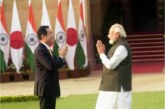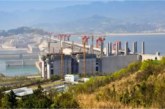The term ‘narcoterrorism’ was first reportedly used 1983 by the Peruvian President Belaunde Terry to designate terrorist-like attacks against his country’s drug enforcement police. The American official agencies started using the term ‘narcoterrorism’ in the late 1980s to describe inter alia the involvement of the Soviet Union in the drug trade.1 In the 1990s, it was applied in a number of circumstances, referring to various complexes of illegal trade in drugs, terrorist methods of violence, and ideological superstructures.
Over the years, the concept of narcoterrorism has acquired two main usages. One of them concentrates on drug gangs applying the methods of terrorists in order to protect their own drug operations. The other aspect focuses on narcoterrorism as the involvement by terrorist organizations in drug trafficking in order to finance their ideology-driven operations.
Towards Definition
Boyce has defined the term ‘narcoterrorism’ as, “the involvement of terrorist organizations and insurgent groups in the trafficking of narcotics.”2 Ehrenfeld’s definition is even wider: “the use of drug trafficking to advance the objectives of certain governments and terrorist organizations.”3 This definition also covers state-controlled trade in drugs outside of channels regulated by the United Nations.
Davids’s definition seems more comprehensive: “On the one hand […] terrorism that aims to protect and support the activities of illegal drug traffickers; and on the other, terrorism by organizations that use the financial profits of narcotrafficking to support their political, religious or other goals.” 4
The Oxford dictionary defines narcoterrorism as ‘terrorism associated with the trade in illicit drugs,’ which is seemingly more plausible and widely used.
Viewed in a broad perspective, the term ‘narcoterrorism’ has become more of a politically-constructed concept than a strict legal or criminalistic definition. The concept is actually a persuasive definition, which fits into various conspiracy theories, as it brings forth a picture of dark forces pitted against entire society.
The simplest way of describing narcoterrorism, according to Jonas Hartelius, is, perhaps, as a part of an illegal complex of drugs, violence and power, where the illegal drug trade and the illegal exercise of power have become aggregated in such a way that they threaten democracy and the rule of law.5
Illicit Drug Trade
The UN International Drug Conventions (1961, 1971 and 1988), envisage the use of narcotic drugs and psychotropic substances only for medical and scientific purposes. The illegal trade in drugs has a commercial motive to produce and distribute drugs for clandestine purposes. The United Nations Office on Drugs and Crime (UNODC) provides the summary of the global drug situation in its annual World Drug Report.
In the 2006 UNODC Report, it was reported that a total of 200 million people, or 5 per cent of the world population in the 15 – 64 year age group, were using illegal drugs. The most widely spread type of drug abuse is that of cannabis, which involves 160 million people. Cannabis production was estimated at 40 000 metric tons in the year 2003. The most important supplier to the European hashish market is Morocco, which delivers 80 per cent of the supply. Amphetamine type drugs are being abused by 26 million people. The global production of amphetamine and methamphetamine is 300 metric tons.
Opiate abusers number 16 million, and 10 million of them are abusing heroin. Production today occurs mainly in Afghanistan, where all 34 provinces are cultivating opium. The purity of heroin in Europe has increased, which indicates a rich supply. Southeast Asia has however, reduced its production by 78 per cent since 1996. The UNODC offers the carefully considered opinion that it is not unrealistic to believe that Southeast Asia may become virtually free of opium production in a few years.
In 2004, world production of opium was 4 850 metric tons, which can produce up to 565 metric tons of heroin. Cocaine production is estimated at 900 metric tons. The abuse of cocaine involves 13 million people, with a concentration in North America and Western Europe.
The Cold War played a direct and prominent role in the production and trafficking of illicit drugs. In fact, the financing of many anti-Communist covert operations, such as those led by the U.S. Central Intelligence Agency (CIA), resorted to the drug economy of various proxy states in which drug trafficking was often condoned and even encouraged. Specific historical cases illustrate how the anti-Communist agenda of the CIA played a decisive role in spurring the global illicit drug trade. These included the French Connection and the role of the Corsican mafia against Communists both in France and in Southeast Asia (Laos and Vietnam), the propping up of the defeated Chinese Nationalist Party (Guomindang) in northern Burma, the Islamic Mujahideen resistance in Afghanistan, and the Contras in Nicaragua.6
The pattern of terrorism in Afghanistan reveals that some of the ‘terrorist’ people or groups once were ‘freedom fighters’ struggling against the Soviets during the 1980s. Not only were they fighting what Ronald Reagan had dubbed an Evil Empire, they were also, to some extent at least, resorting to the already growing Afghan opium economy. It is common knowledge nowadays that at the time both the CIA and the ISI (respectively, American and Pakistan intelligence services) played a direct role in funneling weapons and money to the ‘freedom fighters’ – the Afghan Mujahideen – as well as at least an indirect role in the local nascent trade in narcotics.7 Thus, the involvement particularly of the ISI in the drug trade further complicates the adequacy of a category such as “narco-terrorism” and would require comparing how different actors like resistance guerrillas, intelligence agencies, and terrorist organizations use the drug economy.
In Afghanistan, opium poppy cultivation has expanded from 82,000 hectares in 2000 to 193,000 hectares in 2007 when the country’s 8,200 tonnes of opium amounted to 93 per cent of global illicit opium production. According to UNODC, in the late 2000s Southeast Asia’s Golden Triangle would be near disappearance as Thailand has all but suppressed cultivation (but still conducts annual eradication campaigns) and as Myanmar and Laos have largely diminished their respective productions.8 Yet, even UNODC frequently questions the sustainability of these “successful” opium bans as alternative development is either absent or at least largely insufficient to make up for the loss of income of some the poorest of Asian farmers.
According to the UNODC estimates of 2003, the world trade in illegal drugs was to the tune of $13 billion at the production level, $94 billion at the wholesale level and $322 billion at the retail level. Though no reliable estimates are available for 2008-09, but broadly speaking these estimates might have almost doubled by now.
It can be observed that the major adding of value takes place at the consumer-level. The global trade in drugs has a larger economic volume than the economies of most countries. In comparison with data from the World Bank, drugs turn over more money than 163 of the 184 countries for which statistics is available.
The profit levels in the drug trade can be very high. People who avoid being intercepted by government authorities can make a profit of up to 20 000 percent on one kilogram of cocaine. This environment of drugs, money, and corruption offers drug dealers and terrorists ample opportunities for profitable operations. Then, it is not remarkable that increasing lines of operators who are accustomed to acting ultra vires or outside the law are drawn into the trade. According to Lee, the following militant outfits have been involved in the illicit drug trade: 8
- Aby Sayyaf (The Philippines): cultivation of cannabis
- Basque separatist movement ETA: trade
- Hezbollah: trade
- Islamic Movement in Uzbekistan (IMU): trade
- Kurdistan Worker’s Party (PKK): trade in heroin
- Tamil Liberation Front (LTTE– “The Tigers”) in Sri Lanka: courier operations
- National Liberation Army (ELN) in Bolivia: all types of operations, except international distribution
- Palestinian Islamic Jihad: trade in hashish and heroin
- Al-Qaeda: trade in opium and heroin
- Revolutionary Armed Forces in Colombia (FARC): trade, and taxation and protection of Colombian cocaine cartels
- Sendero Luminoso (Peru): protection of coca cultivation and laboratories
- United Self-Defence Forces in Colombia (AUC): all aspects of cocaine trade
The possibility of more terrorist outfits having joined the bandwagon of illicit drug trade after 2004 cannot be ruled out.
Countermeasures
This shows that such an unholy nexus between the illicit drugs peddlers and the terrorist outfits pose serious threat to international peace and security. Dealing with the menace of narcoterrorism calls for well-concerted global action.
Besides, administrative measures are required to be undertaken by each country to limit and control production and distribution of drugs in coordination with the United Nations. Undoubtedly, the international drug enforcement is coordinated through the Interpol and the World Customs Organization (WCO); the operative measures are conducted by the member countries. In this regard, there should be periodic monitoring and exchange of information between the Interpol and the member countries.
The counter-terrorist measures should be designed to directly destroy the terrorist networks in tandem with international coordination and cooperation. Stringent action against money laundering is called for because converting profits from crime to legal assets is dealt by tracking and freezing of payments, assets etc. This function rests primarily with national authorities.
Jonas Hartelius has suggested the following policy recommendations to counter narcoterrorism and these seem plausible: 10
- Public opinion moulding against non-medical use of drugs (controlled substances) should emphasize more strongly that such use is a funding channel for narcoterrorism and other forms of organized crime.
- National drug prevention and intervention strategies should set a sharper focus on diminishing the demand for drugs among drug abusers.
- Successful “model projects” in drug prevention, intervention, and treatment (e.g. by police or customs authorities, social services, and schools) should be recorded, evaluated and presented for adoption elsewhere.
- Monitoring and coordination of measures and their effectiveness should become a more integrated part of the strategic intelligence service in the drug control and enforcement field.
- Measures against money-laundering should be incorporated more actively in any investigation and prosecution of drug crimes and drug related crimes.
Notes
- Cited in B.M. Bagley, Drug Trafficking research in the Americas: An Annotated Bibliography, Coral Gables (FL): North South Center Press, 1997, p. 1.
- D. Boyce, “Narco-Terrorism”, FBI Law Enforcement Bulletin, October 1987, pp. 24-27.
- R. Ehrenfeld, Narcoterrorism, New York: basic Books, 1990, p. xiii.
- D. J. Davids, Narcoterrorism – A Unified Strategy to Fight a Growing Terrorist Menace, Ardsley, New York: Transnational Publishers, 2002, pp. 4-20.
- Jonas Hartelius, Narcoterrorism, Policy paper 3/2008, East-West Institute, Sweden, February 2008, p. 2.
- Pierre-Arnaud Chouvy, “Drug Trafficking”, in S. C. Tucker (ed.), The Encyclopedia of the Cold War: A Political, Social and Military History, Santa Barbara: ABC-CLIO, 2007, pp. 339-341.
- Pierre-Arnaud Chouvy, “Narcoterrorism in Afghanistan”, Terrorism Monitor, Vol. 2, Issue 6, 25 March 2004, available at http://www.geopium.org/terrorism-monitor-afghanistan-narcoterrorism.html .
- Pierre-Arnaud Chouvy, “Afghanistan and he failure of global counternarcotics”, Afghanistan Info, No. 63, September 2008, available at http://www.geopium.org/chouvyAfghanistanInfoAfghanistan%20the%20failure%20of%20global%20counternarcotics.htm .
- G.D. Lee, Global Drug Enforcement – Practical Investigative Techniques, Boca Raton: CRC Press, 2004, pp. 296-298.
- Hartelius, n. 5, p. 15.
Source: Third Concept/December2009/Vol. 23/No.274/P.no.7/


